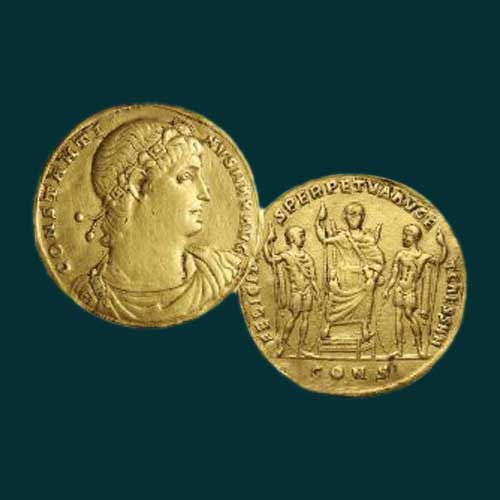A Look at How Holiday Coins Came into Existence
2017-12-30 Sat
Every year people celebrate the holidays with different gifting traditions and sometimes coins are given too as gifts. The practice of putting gifts in a stocking, for example, dates back 1,700 years to Ancient Rome and the gold coins of Nicholas of Myra. Chocolate coins, or “gelt,” play a part in modern Hanukkah celebrations, as well, and date back until at least the 17th century.People look at you in a weird manner when you say you haven’t heard of Santa Claus. But few people know the history behind the Christmas tradition of Saint Nicholas. In America, the popular image of a jolly, plump Santa with reindeer traces back to Clement Clarke Moore’s early 19th-century poem “A Visit from Saint Nicholas” (or “Twas the Night Before Christmas”).
The next century will witness skilled advertisers, who would continue to refine American Santa Claus for the sole reason of selling their products during the holidays. It was then that we would see elves, the bright red suit, Mrs. Claus, and many other additions to the tale.
The real Nicholas, though, was a Christian bishop that lived in the fourth century A.D. in Myra. He was well-known for his generosity, love of the poor, and charitable acts.
The most famous story from Nicholas’s life dates back in 330 A.D. and includes the bishop saving three girls from poverty. He did so with anonymity by tossing gold coins through the window at night. The coins happened to land in stockings, which were hanging by the fire to dry. From this story came the earliest Saint Nicholas tradition of secretly putting gifts in a stocking.
A gold medallion from the reign of Constantine sold at auction in 2015 for $198,000. It is difficult to find out what kind of coins Nicholas used in his charitable efforts. However, reason would dictate that these coins would have been Roman and depicted Emperor Constantine.
Coins and medallions of Emperor Constantine still exist today and can be bought and sold by a variety of different retailers and auctions. The objects range in value from hundreds to thousands of dollars, depending on condition and scarcity. In Los Angeles in June 2015, one rare Constantine medallion sold for $198,000.
It was in the 1600s-1700s when the tradition of giving coins for Hanukkah started. However, as Israel’s oldest daily newspaper Haaretz explains, the tradition has roots in the very origin of Hanukkah itself, over 2,000 years ago:
Before gelt (‘money’ in Yiddish) became synonymous with chocolate, it referred to small amounts of money exchanged between friends, or gifted from parents to children during Hanukkah. Famous legends believe it to be linked to the miraculous Maccabean victory over the Ancient Greeks when the Hasmonaean descendants minted national coins to celebrate their freedom.
In Europe, the old custom of honoring religious teachers with a token of gratitude around Hanukkah influenced the modern practice. In the 1920s, American candy companies produced gold- and silver-wrapped chocolate gelt. According to Haaretz, these companies may have drawn their inspiration from the tradition of chocolate coins given to children as part of St. Nicholas Day, celebrated throughout Belgium and the Netherlands in early December.
Latest News
-
Panchala King Bhanumitra Copper Coin
2024-04-26 FriThe Panchala kingdom was ruled by the Mitra kings. The Mitra kings are known to issue coins and most...
-
Mahatma
2024-04-25 ThuIndia Post issued a commemorative postage stamp on #LalaHansraj, also known as Mahatma Hansraj for�...
-
Berar Mint of Muhammad Akbar
2024-04-25 ThuBerar was a kingdom located in the Deccan region, with Elichpur as its capital. It was one of the Su...
-
Janma Kalnayak of Bhagwan Mahavir
2024-04-24 WedOn 21st April 2024 which was the 2550th Janma Kalnyanak of Bhagwan Mahavir Swami, PM Modi unveile...
-
Gold Pagoda of Vijaynagar Empire King Deva Raya I
2024-04-10 WedKing Deva Raya I of the Vijayanagara Empire was a patron of Kannada literature and architecture. He ...

